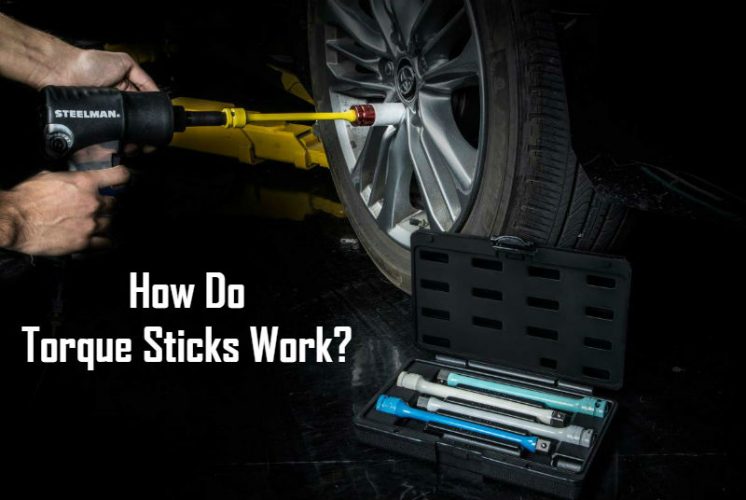Torque sticks are essential tools in the realms of automotive repair and assembly, particularly when it comes to achieving precise torque specifications. Understanding the mechanics behind these instruments can enhance their effectiveness and ensure optimal performance in various applications. This comprehensive exploration will elucidate how torque sticks function, the advantages of their use, and the different types available for consumers.
To commence, it is vital to define what a torque stick is. At its core, a torque stick is a specialized tool designed to apply a predetermined torque to a fastener, such as a nut or bolt. This is typically achieved by coupling it with a power tool, providing a reliable means to control the applied force without the need for manual adjustments. The primary goal of utilizing torque sticks is to ensure that fasteners are neither over-tightened nor under-tightened, both of which can lead to disastrous mechanical failures.
One of the most intriguing aspects of torque sticks is the engineering principle that facilitates their operation. Most torque sticks employ a specific mechanism known as the compliance principle. Torque sticks are engineered to be elastic to a degree; as they are subjected to torque through a power tool, they elongate slightly until the predetermined torque value is reached. Once this threshold is met, the stick essentially “slips” or flexes, thereby preventing the application of any additional torque. This unique characteristic assists in maintaining the integrity of the connected components and ensures uniform tension across all fasteners.
Next, let’s consider the various types of torque sticks available in the market. While they generally serve the same fundamental purpose, they may vary substantially in terms of design, material, application, and calibration. The most common types include:
- Standard Torque Sticks: These are typically crafted from durable materials such as steel or aluminum and are designed for general automotive applications. They come in various lengths, with longer sticks providing lower torque ranges and shorter sticks facilitating higher torque applications.
- Color-Coded Torque Sticks: Aesthetic simplicity meets functionality with color-coded torque sticks. Each hue correlates to a specific torque value, allowing technicians to quickly identify and select the correct stick without ambiguity. This is particularly advantageous in high-pressure environments where time is of the essence.
- Torque Extensions: Torque extensions are designed to be attached to standard ratchets or power tools. Their versatility enables users to reach fasteners in confined spaces while still achieving optimal torque application.
- Electronic Torque Sticks: These advancements in technology offer enhanced accuracy and precision. Equipped with digital displays, electronic torque sticks provide real-time feedback to operators, ensuring that the specified torque is adhered to with meticulous precision.
- Calibration Tools: While not a torque stick per se, calibration tools are critical for ensuring the accuracy of torque sticks over time. Regular calibration is essential to maintaining consistent performance and reliability, especially in professional settings.
Numerous benefits accompany the use of torque sticks in both professional and DIY settings. First and foremost, they foster uniformity. Ensuring that all fasteners are tightened to the appropriate specifications minimizes the risk of mechanical failure due to uneven torque distribution. This is particularly crucial in projects involving structural integrity, such as in automotive assembly where safety is paramount.
Moreover, torque sticks mitigate the risk of user error. In the hands of skilled technicians, the precision offered by torque sticks leads to a more systematic and efficient repair or assembly process. This reduces labor time and, consequently, costs for automotive professionals and consumers alike. The reduced likelihood of damage to fasteners can also prolong the life of components, yielding additional economic benefits over time.
Conversely, misuse of torque sticks can lead to significant complications. One must be cognizant of the limitations of torque sticks. Failing to select the correct stick for a specific torque requirement can lead to over-tightening or damage to fasteners. Thus, understanding the specifications and recommendations for each stick becomes imperative.
Another potential pitfall lies in maintenance. Over time, torque sticks may lose their calibration or become worn due to frequent use. Regular inspections and calibrations are critical to retain their effectiveness. Technicians should also be vigilant for signs of physical damage, as this can influence their reliability and precision.
To conclude, torque sticks represent a vital advancement in torque application technology. Their strategic design and functionality enable users to apply the precise torque necessary to secure fasteners without unnecessary risks. By familiarizing oneself with the different types available, understanding their mechanics, and appreciating their benefits and limitations, users can leverage torque sticks to enhance performance in automotive repair, construction, and various machine assembly tasks. With the balance of technology and knowledgeable usage, torque sticks can significantly contribute to the overall integrity of mechanical systems.
